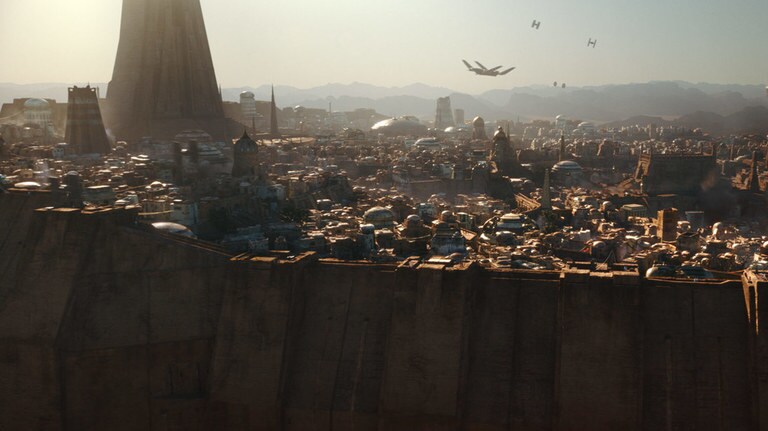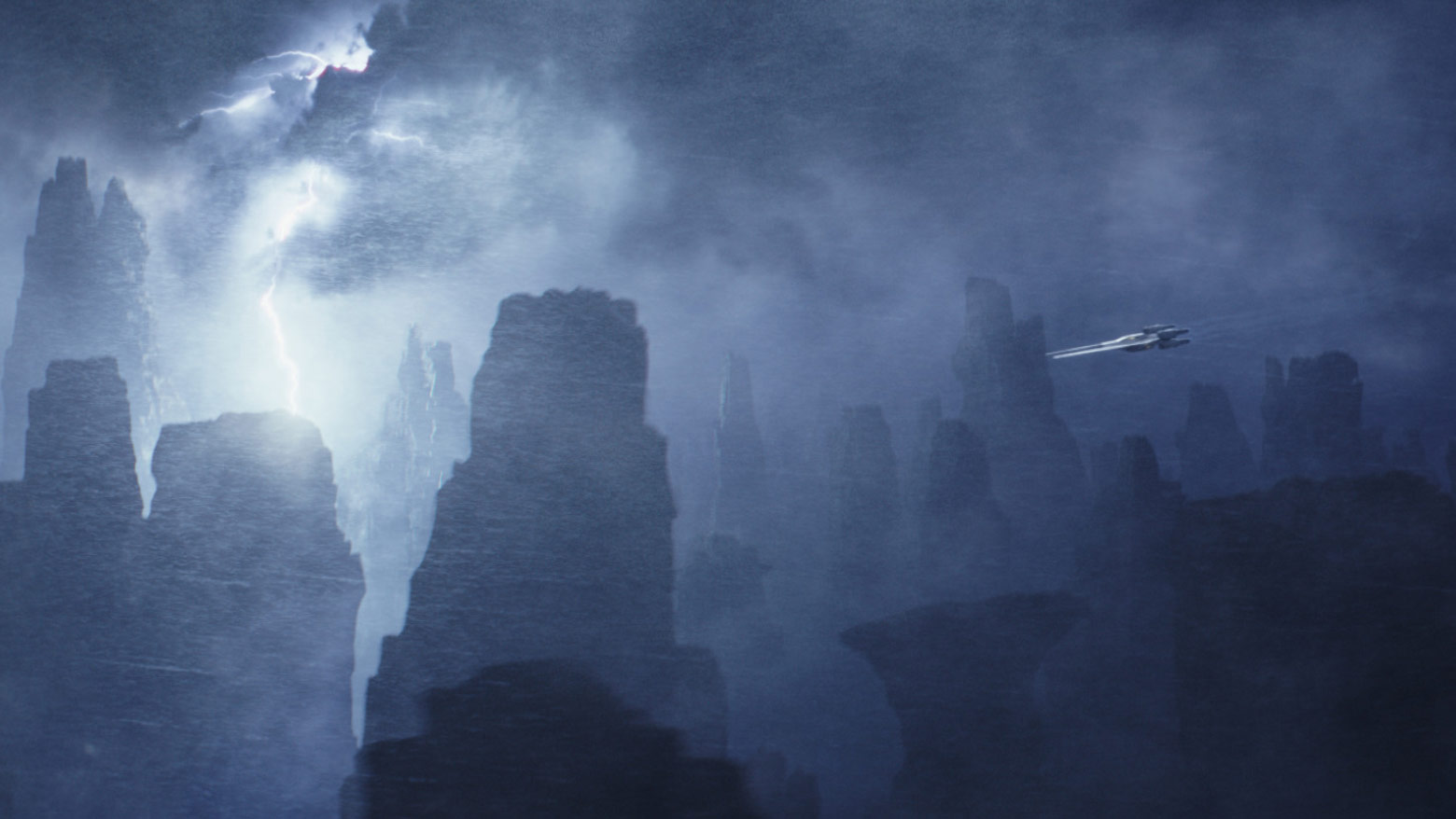I'm not going to break down each planet like I did last year, as I feel I would just repeat myself. Instead I want to point out a trend I've noticed in the Disney era of the franchise. Rogue One is the eighth theatrical film in the Star Wars franchise, and at this point one would think the series would have run out of biomes to steal from Earth to make into whole planets. And, well, you'd be half right.
Let's look at Jedha:

This is the second desert planet to appear in a movie's teaser and make fans ask, "Is that Tatooine?" Thankfully the answer is no; revisiting Tatooine is what Star Wars does when it's too afraid to try something new.
So how does Star Wars keep doing desert planets without making them all look the same outside the trailers? Because you can't just describe these planets with the word "desert."
Let's break down the desert planets in the movies:
Tatooine: "Lawless Desert"
Geonosis: "Termite-infested Desert"
Jakku: "Junkyard Desert"
Jedha: "Holy Desert"
Jedha distinguishes itself with its "Holy City," full of ancient history of followers of the ways of the Force. The fact it is another desert planet is incidental; it's not used as a gimmick. Same with Jakku; the focus is the wreckage of the war between the Rebels and the Empire. Furthermore, The desert aspects are different: Jakku resembles the Sahara, while Jedha is much less sandy and much more mountainous, having been filmed in Jordan.
(Also Jedha is actually a moon. Not that you could tell if it wasn't in the on-screen captions.)
Let's contrast with another mountainous planet that appears in the same film: Eadu.

The terrain is probably indistinguishable from Jedha's, but you can't tell and/or don't care because the climate is opposite. And based on the brief view from space in the film, the whole planet looks that way. So instead of two "mountain" planets, we have "arid mountain" and "monsoon mountain" planets that look nothing alike. Similarly, contrast the two ocean worlds Mon Cala and Kamino. One has permanent rainstorms, the other has a perfectly mundane climate. Contrast the wealthy city planet Coruscant with the crime-infested city moon of Nar Shaddaa (it's in the comics).
When you use just one element at a time, once you run out of elements you must start repeating yourself. Combine two elements and suddenly you have exponentially more options. So next time you brainstorm, throw two ideas in a blender, and see what comes out. You just may strike gold.
No comments:
Post a Comment